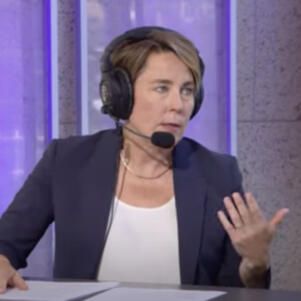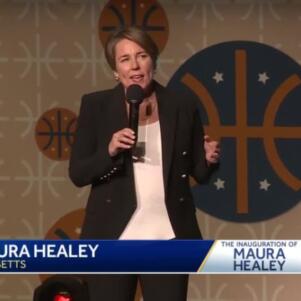Credit Rating May Have Factored Into Massachusetts Budget Cut Decision
By State House News Service | January 11, 2024, 12:20 EST

By Colin A. Young
State House News Service
The last time a Massachusetts governor made unilateral midyear budget cuts, like Governor Maura Healey did Monday, the state’s credit rating was downgraded seven months later. It may not have been a direct line between the two actions, but that history provides context for the Healey administration’s decision to cut spending rather than dip into the state’s substantial savings.
When then-Governor Charlie Baker made budget cuts in December 2016, state government had collected hundreds of millions of dollars less in revenue than it expected that year. And he and legislative Democrats had agreed to use excess capital gains tax collections to support spending rather than allowing that money to flow into reserves, like the Stabilization Fund, even though tax revenue was up year-over-year. In fiscal year 2017, the Baker administration was also trying to drop the amount of one-time revenues in the annual budget to $250 million, down from $1.2 billion in the fiscal year 2015 budget that Baker inherited from his predecessor, Governor Deval Patrick.
In June 2017, S&P Global Ratings lowered its rating for Massachusetts bonds from AA+ to AA, criticizing “the commonwealth’s failure to follow through on rebuilding its reserves as stipulated through its own fiscal policies,” essentially whacking the state for tapping into what should have been rainy day fund money when it was merely cloudy.
The rating was not upgraded back to AA+ until April 2023.
“The Rainy Day Fund is there for extraordinary circumstances, typically in a recessionary environment where you see revenues actually declining year over year. It would be, perhaps, appropriate to use it then,” Secretary of Administration and Finance Matthew Gorzkowicz said Monday, January 8, explaining why Healey opted for budget cuts instead. “But we’re, again, in a revenue growth environment. Revenues are still growing year over year. They’re coming in below benchmark, meaning that the revenues aren’t meeting our expectations, but they are still growing in FY ‘24 and we expect that they’ll continue to grow in [FY] ‘25. So we take very seriously the role of the Stabilization Fund and its need to protect programs and services in a recessionary environment. We don’t see that being the case at this point in time.”
The state has a roughly $56 billion annual budget and its Stabilization Fund is currently at a record high of $8.1 billion, the secretary said Monday, up from $1.2 billion at the time of the June 2017 rating downgrade.
Massachusetts is preparing to offer just shy of $2 billion in general obligation revenue bonds by negotiation in two slates: a combined $1.39 billion around January 10 or January 11, and then another $600 million by the first week of February. In the lead-up to those sales, the state held a conference call for investors or bond-buyers Tuesday, January 9 and also issued a supplement to last month’s comprehensive financial document to describe the actions Healey took Monday.
Gorzkowicz said Tuesday that he’s been working closely with the Treasury and all three of the major rating agencies ahead of the bond sales. He said the rating agencies are looking for “swift and decisive action” from Massachusetts as the state runs into choppy budget waters, and specifically mentioned that the Stabilization Fund is viewed as off-limits in this case.
“They want to make sure that we’re on top of it, and that we’re managing it responsibly,” the secretary said. “And I think that actions that the administration took yesterday show exactly that. It shows that we’re monitoring the situation. We’re taking action when action is necessary to do proper belt-tightening. We’re preserving the state’s rainy day fund.”
The state could soon have another incentive for keeping a high Stabilization Fund balance. The Massachusetts Senate plans to consider a bill Thursday, January 11 based on Healey’s proposal to leverage the interest generated from the rainy day fund as matching funds for federal grants.
Healey’s administration is not opposed to spending down reserves in any situation. With the expectation that the state’s emergency assistance shelter system will cost $932 million in fiscal year 2024 (compared to $325 million budgeted) followed by $915 million in fiscal year 2025, the administration has proposed draining a roughly $700 million “transitional escrow” account to help cover those costs.
That account — which a Baker administration budget chief once said “acts almost as a stabilization fund on top of the Stabilization Fund” — was created in 2021 to stash surplus revenue during a period when tax collections were consistently beating projections.
One key lawmaker, state Senate Ways and Means chairman Michael Rodrigues (D-Westport), has been skeptical of the administration’s plan. But the actions announced Monday could whittle down the alternatives for addressing those ballooning shelter costs.
“We protect our reserve funds — whether it’s transitional escrow or the state fund — you know, we worked very hard. We’ve been very responsible for building up this reserve fund, and we’re going to think long and hard about how we expend any of those reserve funds,” Rodrigues said last week.









